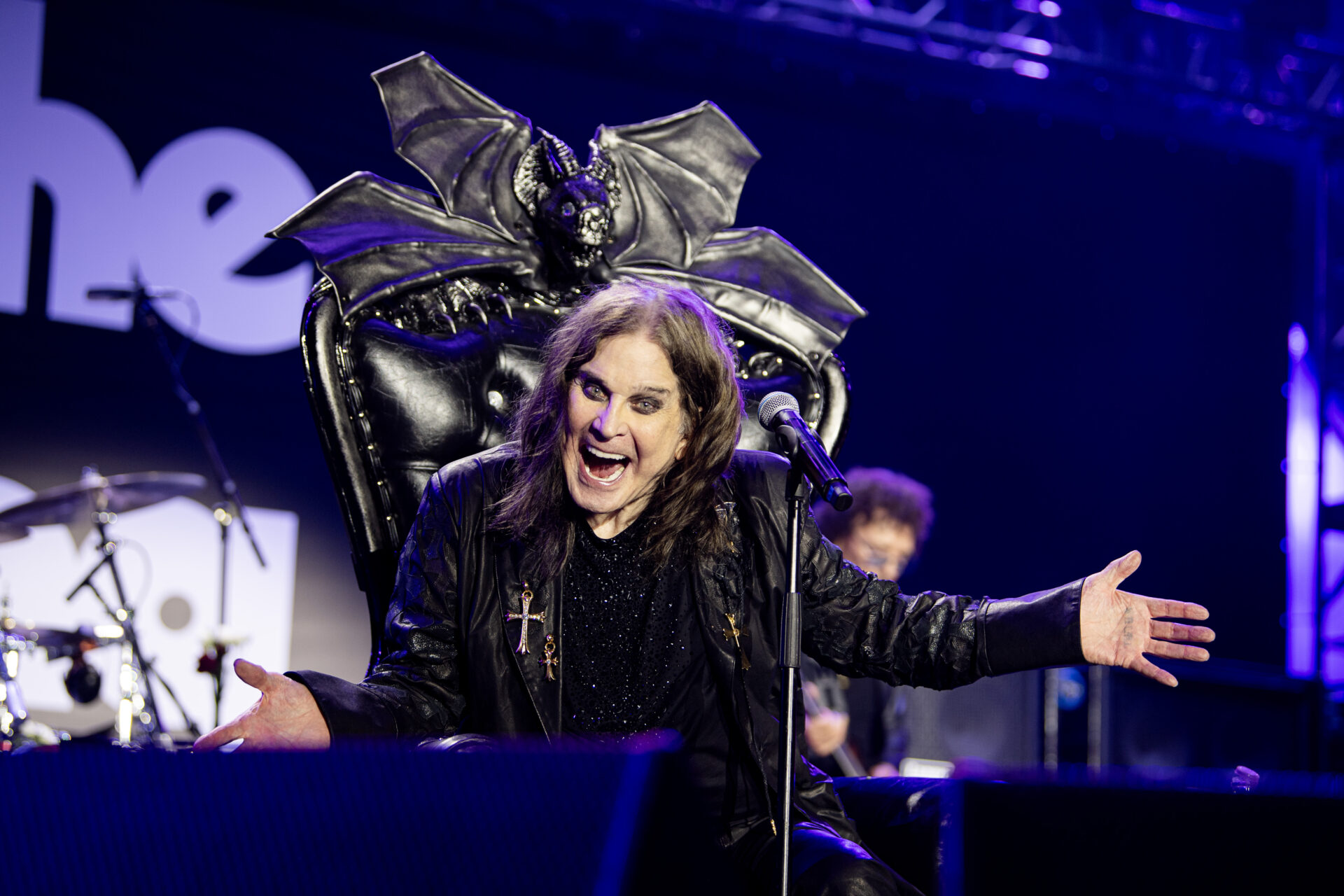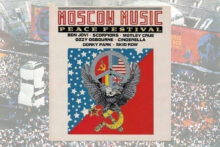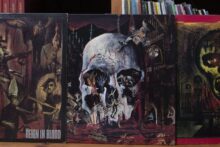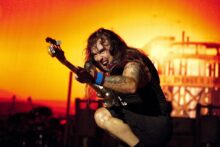Before even a note had been played, the Back To The Beginning concert was clearly designed around a particular narrative. For Ozzy Osbourne and Black Sabbath to end their story as live musicians in Aston at the Villa Park stadium was exquisitely appropriate. The choice of venue acknowledged the wider narrative of metal’s roots as growing from that particular grimy and industrial inner city region of Birmingham, where their story began back in 1968. The pilgrimage of some of the biggest names in metal to their local football stadium to salute the retirement of their common ancestor, was a ritualisation of this idea.
For my money though, the most narratively apt aspect of Back To The Beginning was how it drew attention to bodies: Their limits, their potential and their ultimate decline.
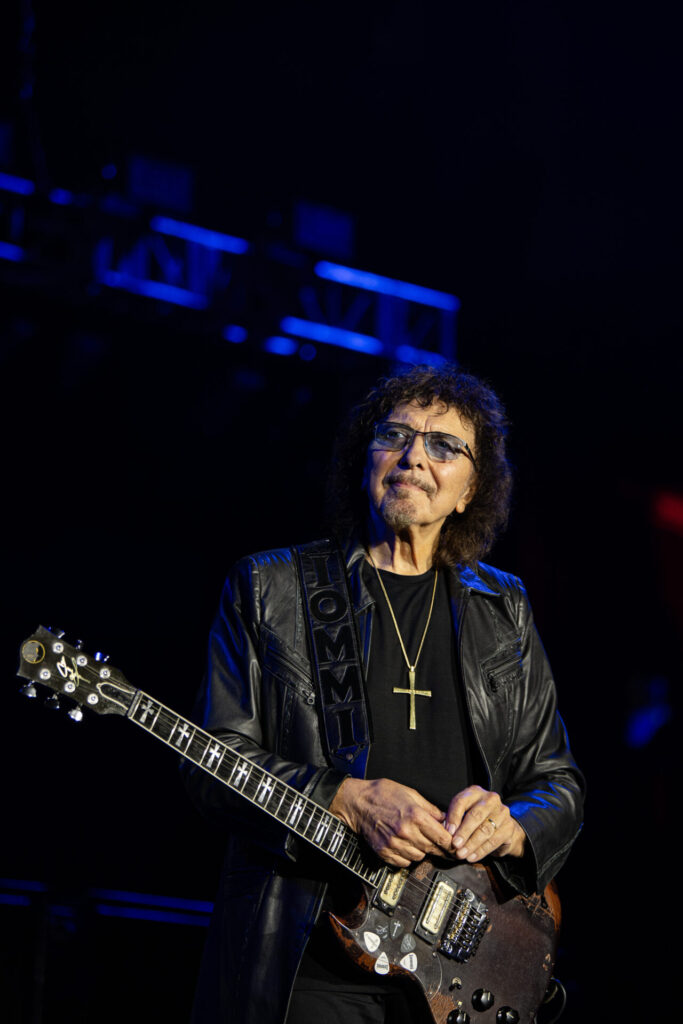
One of those bodies was Tony Iommi’s. It’s well known that while still a teenager, in 1965, he lost the tips of his two middle fingers on his chord-forming hand in an industrial accident while working in a car parts factory a brisk walk away from where Villa Park is situated. Iommi’s stubborn refusal to give up followed by the ingenuity of forging his own prosthetic finger tips and finding compositional and technical workarounds to ease the pain of playing, not only succeeded, but was likely crucial to the creation of the sound of metal itself.
This is a story tailor-made for a genre that adores the mythic. The industrial machine may attempt to crush us, but metal endows us with the resilience to transcend such inhuman forces. The term ‘metal’ is both a celebration of hardness, as well as a kind of taunt that our bodies can bear the weight even as it tries to break us. The metal body is one-part cyborg and one-part stubborn working class Brummie. That mix of mythic grandeur and everyday struggle is one of the most appealing aspects of metal, at least in its British incarnation.
Of course, it was not Iommi’s body that took centre stage at Back To The Beginning . This was an Ozzcentric event and the vocalist’s own brokenness provided much of the drama leading up to 5 July. His Parkinson’s disease is so far advanced that there was little doubt that this would be the last gig. Would he even make it on stage though? And even if he did, would his physical state prove humiliating? Pre-gig, there were online rumblings suggesting that the whole event was disrespectful to the singer and that his wife Sharon Osbourne was simply exploiting him one last time. The regular updates from him on how hard he was working to prepare himself in the last few weeks, may have been heartfelt statements or they may have been designed to create false jeopardy – or maybe both, it was hard to tell.
Incontestably though, unlike other ‘final’ gigs in recent times, there will very likely be no cynical money-making return a few years later. This much was real. Narratively, Black Sabbath’s career will forever have been kickstarted by Iommi’s adapting to the imposed limits of his body and terminated by Ozzy’s surrender to a bodily limit that could not be overcome indefinitely.
After eight hours of tribute sets by metal’s great and good (and Sammy Hagar), we finally reached narrative apotheosis. Almost unbelievably, Ozzy managed not just to sing his way powerfully through a five song solo set, it may actually have been his finest ever performance.
It was desperate, urgent stuff. Seated on a throne, Ozzy seemed to be constantly about to burst up onto his feet. Every bit of energy he had was spent on taming the unruly Parkinson’s urge to move wildly and uncontrollably. The performance was a study in frustration and bravery (the stuff of everyday disabled life). Gone was the clown prince of darkness, throwing buckets of water over the audience; in place of such slapstick was an intensity never seen before.
What was even more extraordinary was the voice. It was Ozzy’s voice, strong and savage with a hint of the atonal. Ozzy also remained the showman, even without the buckets of water. His rendition of ‘Mama I’m Coming Home’ as the penultimate song of his solo set was a display of emotional nakedness whose tragic power was impossible to withstand. It reached at least as far as my laptop in North London: As someone whose father is the same age as Ozzy and is also suffering from Parkinson’s, the performance turned me to jelly.
And then finally it was Black Sabbath’s turn. Ozzy seemed to be wilting a bit by the time ‘War Pigs’ began. That was fine – they are a band after all and it’s not just about one guy – and the four-song set was as perfect a demonstration of Sabbath’s power as you could find. Short though their time on stage was, it was enough not just to remind everyone what made them so pathbreaking, but also that they can still play. That potent combination of Iommi’s primal riffology, Geezer Butler’s nimble fretwork and Bill Ward’s powerful drum architecture – as well as Osbourne’s charisma – remains intact.
To top it all off, the set also saw one of the most subversive gestures I’ve ever witnessed in a rock or metal show. Just before ‘Iron Man’, Bill Ward took his top off. Now in his late 70s, his body is far from lithe and toned. As with Ozzy’s frailty and Iommi’s fingertips, Bill Ward’s sagging flesh was no barrier to the channelling of the elemental power this music has. What we were seeing was not ‘body positivity’ in any simple sense; rather a recognition that while the body’s aging may frustrate, there is no need for shame, that it still contains power.
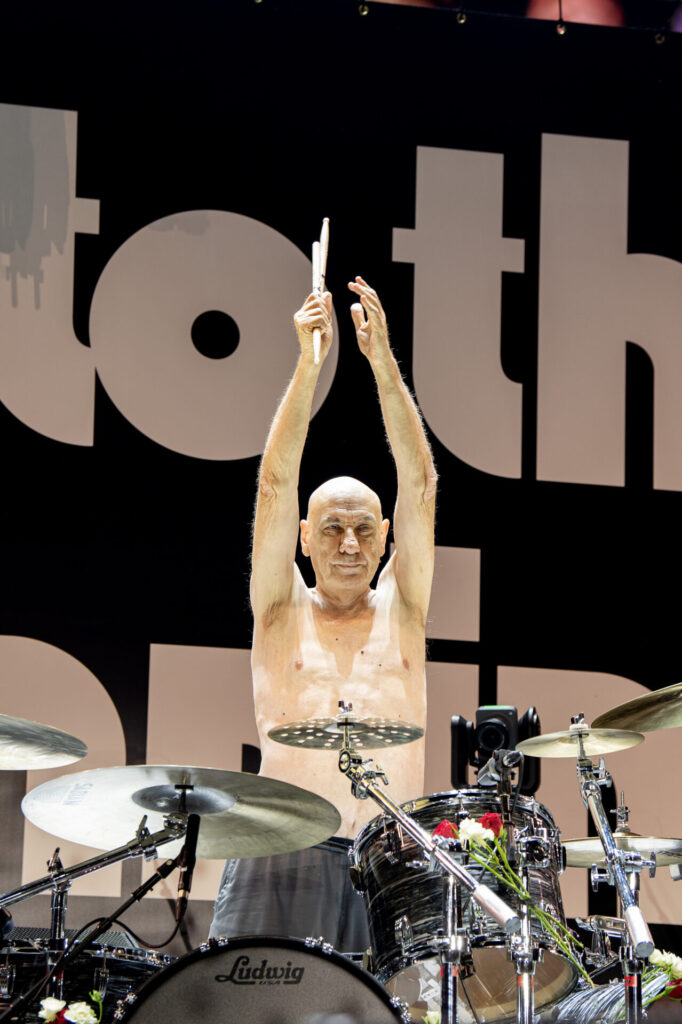
It’s a delicate balance though. A few more songs and the show would have collapsed. By the end, Ozzy looked exhausted. Both Ozzy and Sabbath have, throughout their entire career, collapsed into self-destruction and musical banality on several occasions. They remind us how metal has always walked a perilous line. It’s a genre balanced between poles: Freedom and control, resilience and self-destruction, generosity and self-indulgence, community and individuality, transgression and mundanity.
The rest of the Back To The Beginning bill demonstrated the how thrilling it is to witness the line being walked, and how maddening it is when metal collapses into its worst tendencies. The bill sometimes reflected the smugness of rock aristocracy. The show didn’t need Sammy Hagar and Ron Wood’s lazy self-satisfaction; it didn’t need a video message from Marilyn Manson; it didn’t need Axl Rose’s tonelessness and the self-indulgent use of a grand piano. The bill was overwhelmingly male, even if diverse in other respects. Whole genres of metal were absent, most notably Sabbathean doom. (I would have killed to see Electric Wizard or Sleep at Villa Park.) And it was pretty brutal to celebrate metal in Birmingham while ignoring Napalm Death, particular since they are Villa fans.
At the same time however, Back To The Beginning also swerved in the other direction, with inspired and unexpected choices that demonstrated how vibrant metal today can be. I have no idea who decided that Yungblud was the right person to cover ‘Changes’ but that person saw their choice vindicated in spectacular and brilliant fashion. While he isn’t a metal artist per se, his inclusion showed that this genre can be reinterpreted – without losing any of its power – in sexually ambiguous ways likely unimaginable at its birth in late 1960s Birmingham. Similarly, the mini documentaries on Birmingham’s metal scene today that were included between sets in the livestream, were clearly designed to show how gender and racial diversity is flourishing in contemporary metal. While it’s true that the balance of Back To The Beginning was slanted towards metal’s big beasts, the fight for the future of metal is very much on.
But even when Back To The Beginning played it safest, the bill also showed how the body’s limits and frailty is right at the centre of metal culture. Metal is physically as well as sonically brutal; Tom Araya damaged his neck so badly over decades of headbanging that Slayer have long since relied on their crowd to bring the energy to their gigs. Ozzy Osbourne is far from the only one at the bill who barely survived alcohol and substance abuse, and every band on the bill has its own story to tell when it comes to addiction. Others have a history of erratic behaviour, as Phil Anselmo and Axl Rose do on a bad day. As celebratory as the day was, the permanent absence of a number of musicians – Randy Rhoads, Cliff Burton, Dimebag Darrell, Vinnie Paul, Layne Staley and Jeff Hanneman – made itself felt in a variety of different ways. Just as metal has lyrically explored the manifold ways that the body can be assaulted and terminated, so it was that the ghosts haunting the stage reminded us that all of us may be victims of murder, addiction, sickness and accident.
This haunting tempers metal’s worst tendencies. As the fan videos shown on the livestream between sets demonstrated, the genre today provides succour to metalheads who live way outside of what is traditionally seen as its white Anglo-Saxon core. And there are going to be many more bodies haunting metal in the years to come. Age is catching up with the metal pioneers of the 1960s and 1970s. Judas Priest’s Glenn Tipton has been dealing with Parkinson’s since 2008 and, while he still plays the odd song live, unconfirmed reports circulating during Back To The Beginning suggest that he is on the cusp of retiring. Soon the artists of metal’s classic period will be engulfed by enforced obsolescence and their bodies will have their due. Steve Harris’s fingertips will not survive his percussive playing style forever; nor will James Hetfield’s wrist be able to sustain his tight downpicking technique indefinitely.
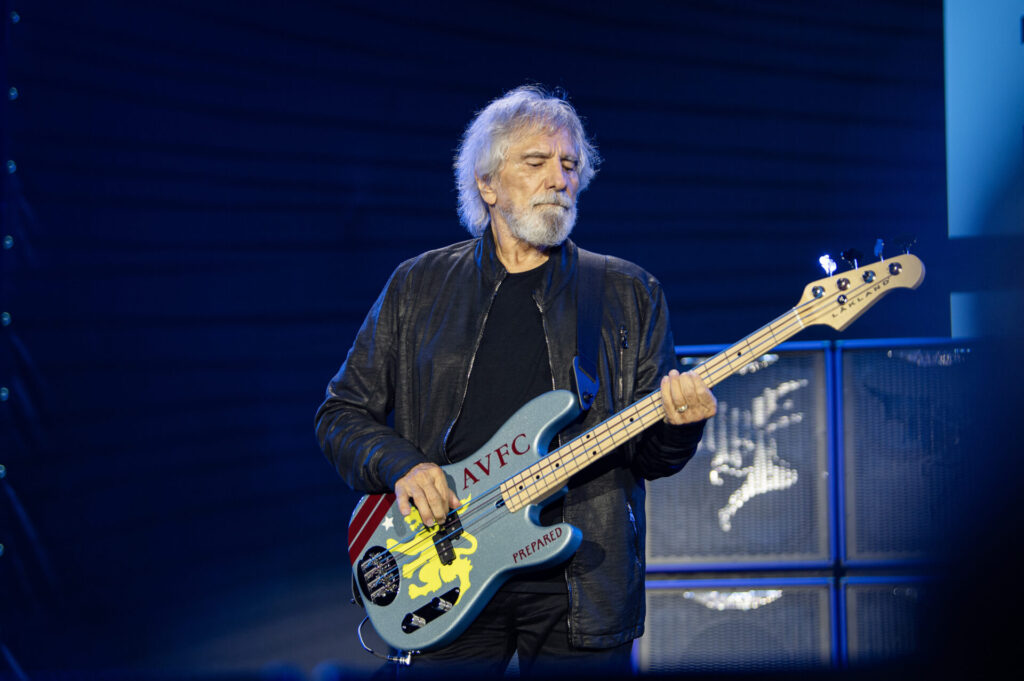
What Ozzy Osbourne and Back To The Beginning have given us is a kind of roadmap for this future. For all the pathos involved, there was something life-affirming about Ozzy’s and Black Sabbath’s sets. Aging can bring with it wisdom and sometimes courage too. There’s a kind of privilege in making it this far; privilege for Ozzy himself and for us as audience.
Metal, as a culture that loves ritual, narrative and the mythic, is uniquely well-placed to fold death, aging and the limitations of the body into the heart of music and scene-making. Just as Black Sabbath’s story started and ended with a confrontation with the limits of the body, so do our own stories. Being able-bodied is short term for every human alive, and we must all have this confrontation at some point during our journey through life. What we saw at Villa Park on 5 July 2025 was a simultaneously celebration and mourning of our own flawed and fleshy reality; that’s something with universal relevance.
Keith Kahn-Harris is the co-editor of Heavy Metal And Disability with Jasmine Hazel Shadrack

